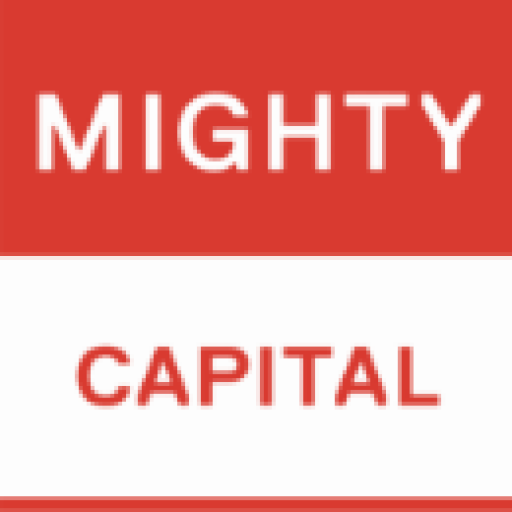Written by and shared with permission of: Mighty Capital Partner, Mary Curtis
Effective Branding Aligns Your Constituent Universe
Many companies assume that branding begins when you bring a product to market. However, that’s just a sliver of the story. A brand is derived from the sum total of the entire constituency experience around a company and its products. Brand creation, by definition, must touch everyone in the ecosystem leading to success.
The Branding Universe
During the process of buying a Dell computer, for example, you may interact with an online portal, a sales person or the company itself. Your journey reflects a collection of encounters beyond just using a laptop. Dell’s success was built with players beyond its customers: shareholders, media, suppliers, the reseller channel, retail outlets and more. Their constituency universe is vast, like a pinwheel where multiple segments swirl around and impact each other.
“Branding is the sum total of experience.”
Applying branding to startups, one of the early tasks is fundraising. Founders must depict the value of a product and culture of the company to attract investors. That’s branding. A positive brand is vital to attract talent. The company must also talk to industry analysts and media. Company culture and values - the brand - should permeate all communications.
“Great branding is like breathing. To thrive, a company must brand itself continuously.”
For any great company, brand creation and reinforcement is like breathing. A thriving company brands itself well as a cornerstone of its operation.
Broadcasting the brand externally is an all too common mistake. Your employees are the foot-soldiers of your brand, so communicate with them early and often. Empower them to carry the banner. The language you use, values you live by and attitudes you take should be palpable and aligned both inside and outside of the organization.
Leveraging a brand: Mighty Capital
Let’s look at how our branding principles apply to our own organization: Mighty Capital.
Products That Count, Mighty Capital’s ‘big sister,’ was founded on a strong core constituency of product managers, cultivated by its founder SC Moatti. The brand provides a well-rounded group of experiences in development, networking, opportunity and learning. The Products That Count brand now enjoys a very large and loyal following.
Along came the opportunity to start Mighty Capital.
SC was very smart about leveraging Products That Count to the benefit of Mighty Capital. She had a group of constituents to lean into, and she even borrowed on the graphic identity of Products That Count. She strategically positioned Mighty Capital as a fund and collective of investors. By rejecting the pre-seed/angel investor model, Mighty Capital gained flexibility to invest in different types of companies and at different stages.
“Business media quickly identified Mighty Capital as a new way to do venture capital.”
SC consistently positions Mighty Capital as an ecosystem, which includes Products That Count. Early media coverage calls Mighty Capital ‘a new way to do venture capital.’ Mighty Capital is a good example of a brand embracing different constituencies including the venture community (partners and other VC’s) and the media community (recognition). Many relationships came together in the Mighty Capital pinwheel in a short period of time.
Case Histories
Years ago, my integrated marketing communications firm Pacifico was selected by Samsung’s semiconductor division. Our first step was a perception survey of the sales channel and customers. At the time, Samsung dominated the memory market through opportunistic pricing strategies. This feedback across the board came with the comment that many customers would have preferred not to do business with them.
“We welcome competition since it creates opportunity for the customer and for us to improve how collaborate.”
This was exacerbated by differing communication styles between Korea and the US.
When a new competitor emerged, we worked with our client to adopt a more gentle message. When Samsung headquarters said, “We’re the leader,” the implication was, “Companies should want to do business with us.” We responded with a toned down message that said, “We welcome competition since it creates opportunity for the customer and for us to improve how we collaborate.”
Big Brand #2
Beginning in the early 90s we worked with TSMC. They came to us as a $740M semiconductor startup - pretty big at the time, but on track to grow. In the company’s earliest days, TSMC Chairman of the Board, Dr. Morris Chang, published a company values statement. It turned out to be a key branding tool. Dr. Chang insisted on the utmost integrity, innovation and best practices at a time when other Taiwanese semiconductor foundries had become known for stealing intellectual property from their customers.
TSMC understood the importance of branding, and they let their constituent universe know it. Internal communication established the brand, setting the standard for how TSMC employees would deliver value.
Pacifico developed a comprehensive, integrated marketing campaign for TSMC beginning in 1993. The company was already operating at 108% capacity so the customer community puzzled at the decision to brand aggressively. TSMC had wisely realized their universe went far past the immediate customer. Within four years the company went public. Today, TSMC offers industry leading foundry technology, and the company has taken its place as one of the top five semiconductor brands in the world.
Five Steps of Branding
Branding is a five step, circular process: creating awareness, differentiation, preference, changing beliefs and changing behaviors.
Ecommerce played a big role in the last two steps. In early days, the Internet was dangerous. Nobody ordered online. Beliefs had to be changed in order for consumer behaviors to follow.
Make Your Universe
When you brand, look inside and out. Understand what you solve in the marketplace and the core values that make what you offer a trustworthy solution. Express your core values in all elements of the company’s communication - packaging, product, user interface and so on. The market will have the final say. If a product fails, your core principles must stand, and lead you to iterate according to market feedback and demand.
“Customers don’t care about the logo. They care about what you are doing for them now. They care about benefits.”
What needs are you serving? What benefits do you offer? Why do you do what you do? Branding is breathing. As soon as your company takes its first breath, begin the branding process, and make it vigorous and evolutionary.

